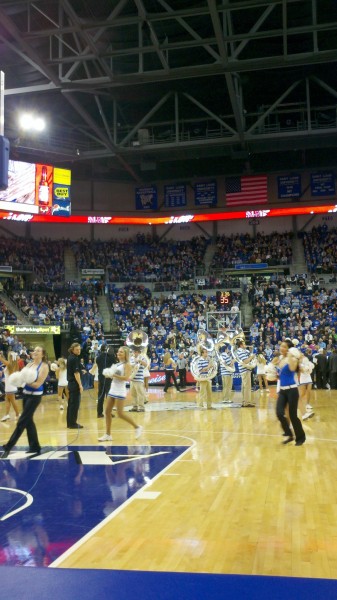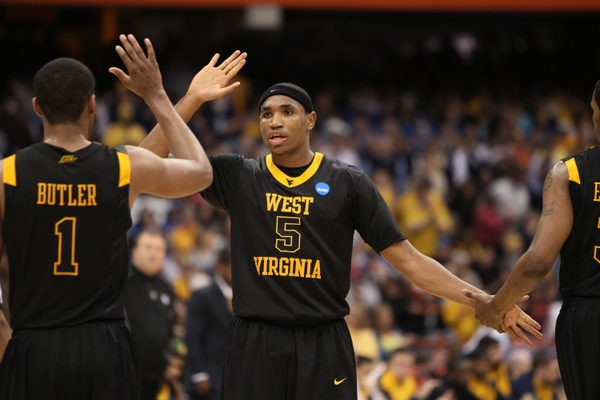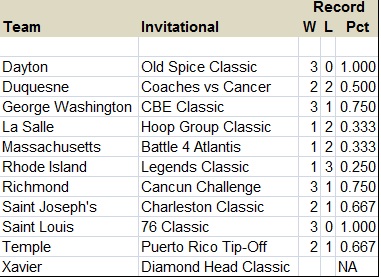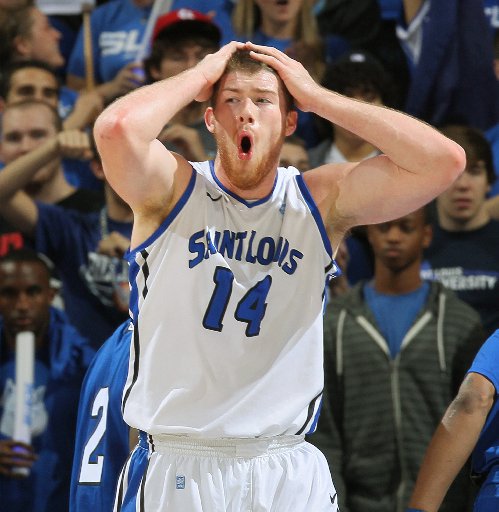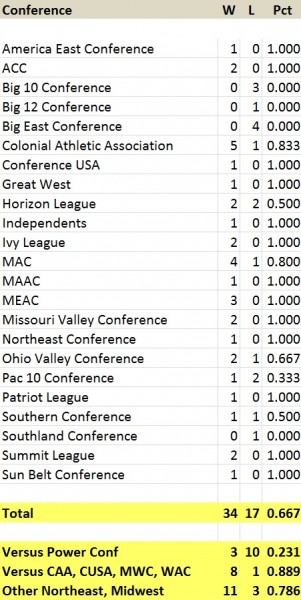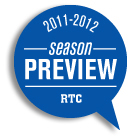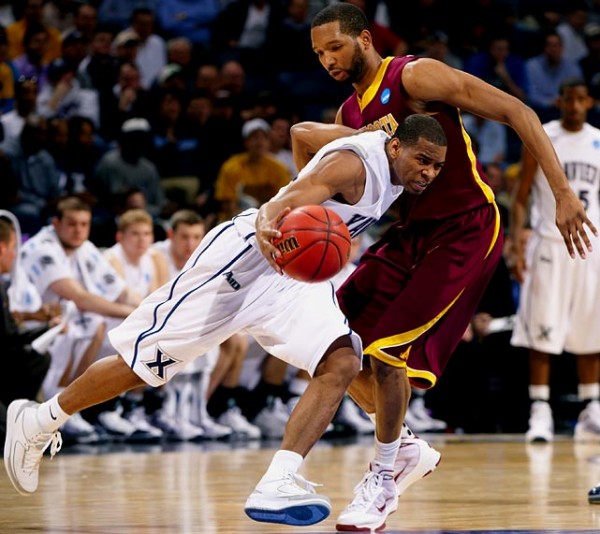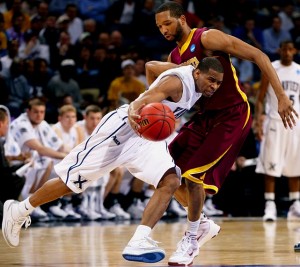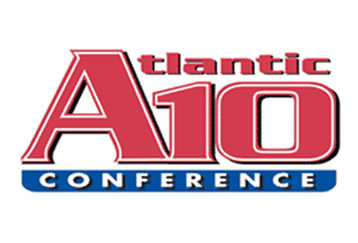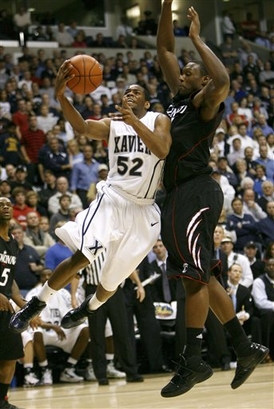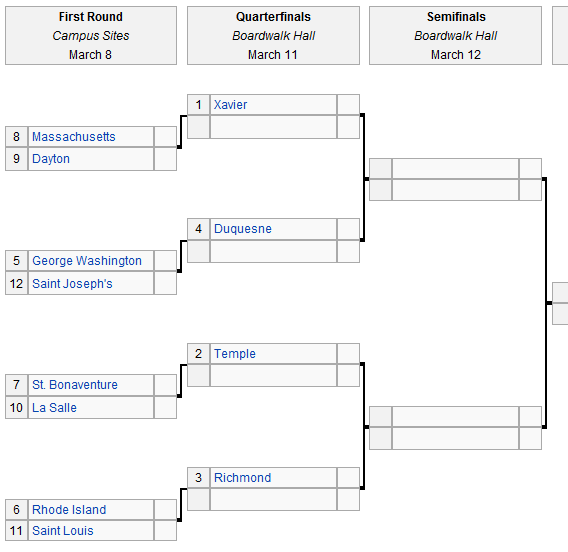Checking In On… the Atlantic 10 Conference
Posted by rtmsf on January 18th, 2012Joe Dzuback is the RTC correspondent for the Atlantic 10 Conference. You can also find his musings online at Villanova by the Numbers or on Twitter @(vbtnBlog)
Reader’s Take
The Week That Was
- No A-10 Teams in the Top 25… Again: The latest round of the AP and Coaches polls (January 16) show no Atlantic 10 team gathered enough support nationally to be ranked… for the fourth consecutive week. Saint Louis missed a good opportunity to impress when the Billikens dropped a four-point decision to New Mexico on New Year’s Eve, picking up their second loss in the process. With the next six teams showing three or four losses, the conference is out of the Top 25 conversation for the next three or so weeks. The other name brands, Xavier and Temple, did not help their causes this past week. Xavier dropped their third game in the last four, this time to Gonzaga in what might have been a good “comparison” game for the Selection Committee. Temple beat #3 Duke but dropped two of their first three conference games. Lacking another marquee out-of-conference game (Temple versus Maryland is a pale imitation), the conference may have to wait until early February and hope that one or two teams will dominate conference play while their power conference counterparts beat each other up.
- Bernadette McGlade’s Recipe for Basketball Masala: Masalas are a variety of spicey soups or stews favored throughout India, Pakistan and most parts of south Asia. A-10 Commissioner Bernadette McGlade and her schedule maker served up their own brand of basketball masala in this opening week of conference play. Strong preseason favorites Saint Louis, Xavier and Temple did not survive the week undefeated (Temple has yet to win with a tough game coming up this week) while recently downtrodden Charlotte and La Salle started strong, each has sustained at least one loss. Rookie Coach Archie Miller of Dayton (whose squad was depleted with graduations and transfers) is riding high, while veteran Mike Lonergan of George Washington (whose squad is well stocked with experienced players) is struggling. Far too early to throw the power rankings (see below) up in the air perhaps, but a few of the results from the past two weeks (Dayton at Temple, Saint Louis at Dayton, Charlotte at Saint Joseph’s for example) maybe critical tiebreakers come March.
Power Rankings
Results from the first quarter of conference play (and a few of the last few out of conference games) hold a strong hint that the conference may be more competitive through the first 12 spots than preseason projections indicated. First week losses to the favorites force me to take a long second (and third…) look at Dayton. With only a few games scheduled, and those yielding mixed results for the teams at the top of last week’s power rankings, the conference appears to be sliding sideways. Massachusetts disposes of their last out of conference opponents fairly easily to move up a spot, while Temple finishes the month 6-1 and Fordham upsets a ranked team.
- Saint Louis (14-4, 2-2) – The Billikens are .500 through the first four games of conference play. They opened conference play with a 79-72 overtime loss at Dayton, the first time Rick Majerus’ squad has lost back-to-back games this season (St. Louis lost their last out of conference game to New Mexico on New Year’s). Their bounce back 78-56 win over George Washington on January 7 was the largest margin win in conference play, with the three other games decided by five or fewer points. Against Dayton, the Billikens held Dayton to a respectable 1.04 point per possession (about 75 total possessions in the overtime game), but failed to break the 1.0 (PPP) mark themselves, a persistent problem last season that Brian Conklin, Kwamain Mitchell and Cody Ellis had resolved this season. None of the three had a good outing however, as they combined for a horrific 12-33 from the field, yielding a 40.9% eFG% and 0.96 points per weighted shot. One can have an off night (there are enough secondary options on the bench and the floor at anytime), but count those game where all three have problems scoring efficiently as an “L”. Saint Louis committed the double sin of allowing the Flyers to score efficiently (over 50% eFG% overall), and rebound for second chances when they did not convert. The Billikens posted similar efficiencies in their loss to Temple last Wednesday. Saint Louis hosts Duquesne on Saturday (1/21) in their only game this week. Read the rest of this entry »






























